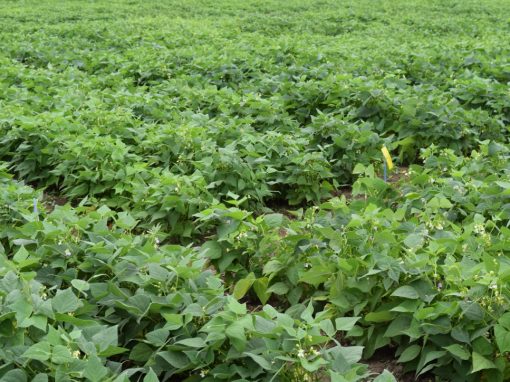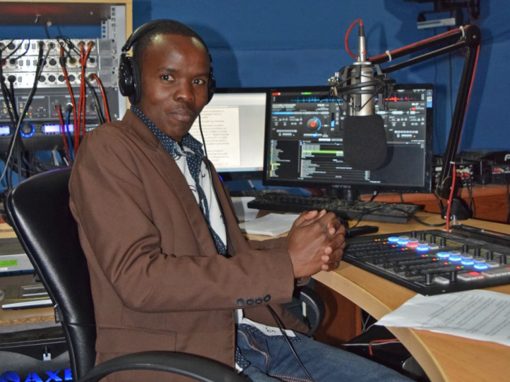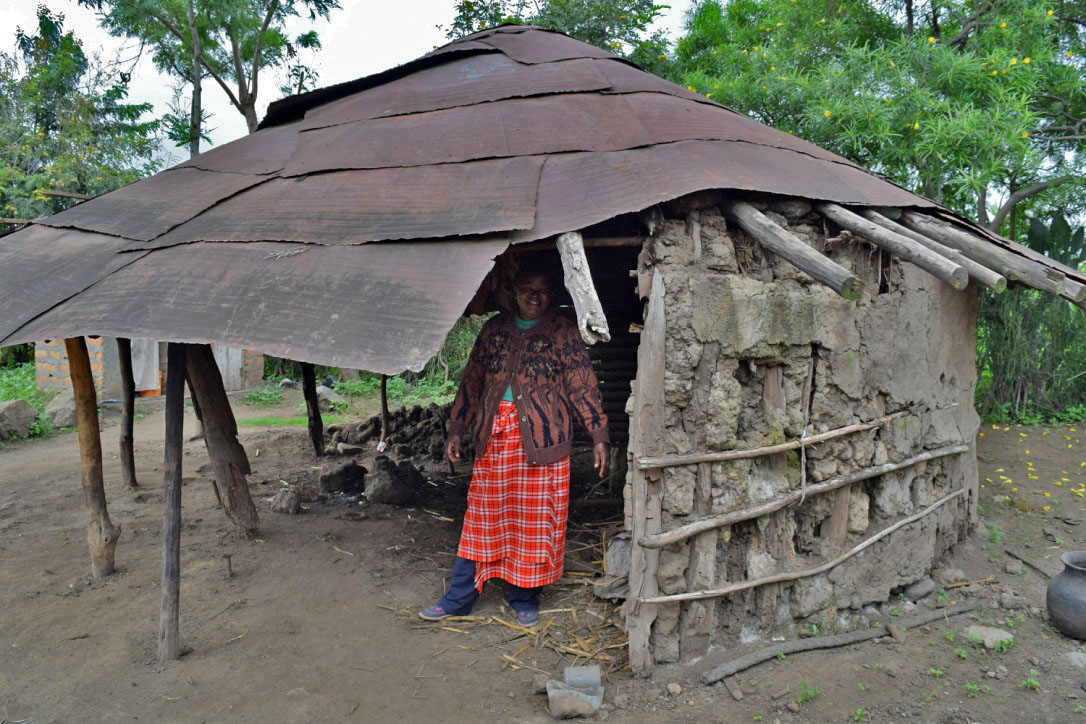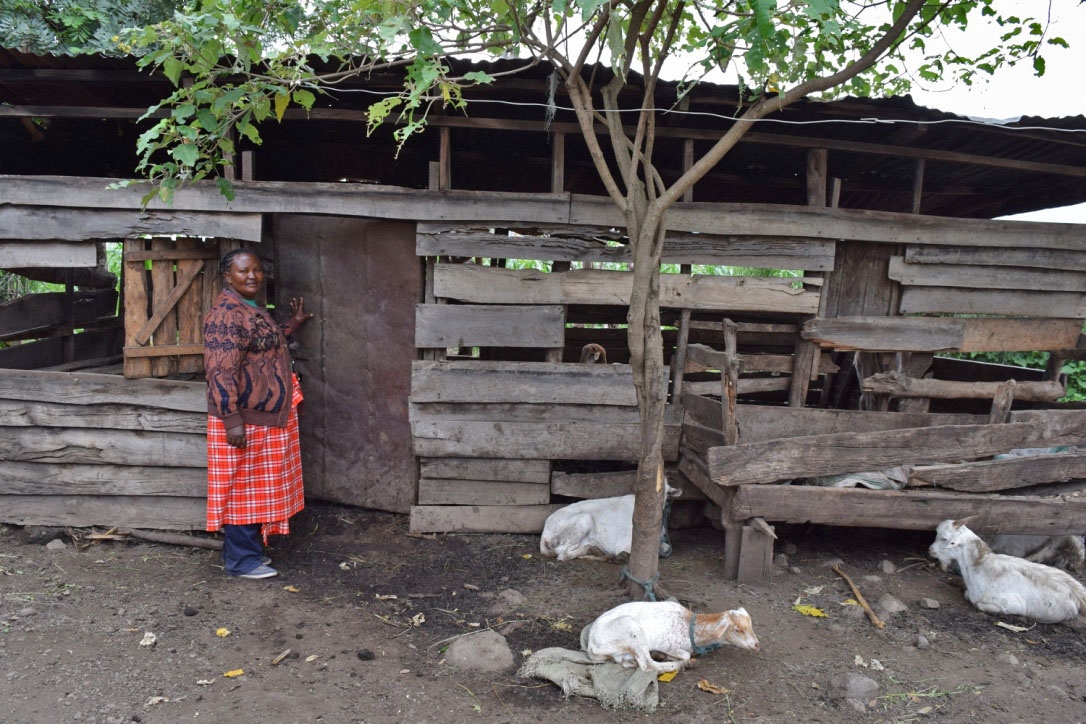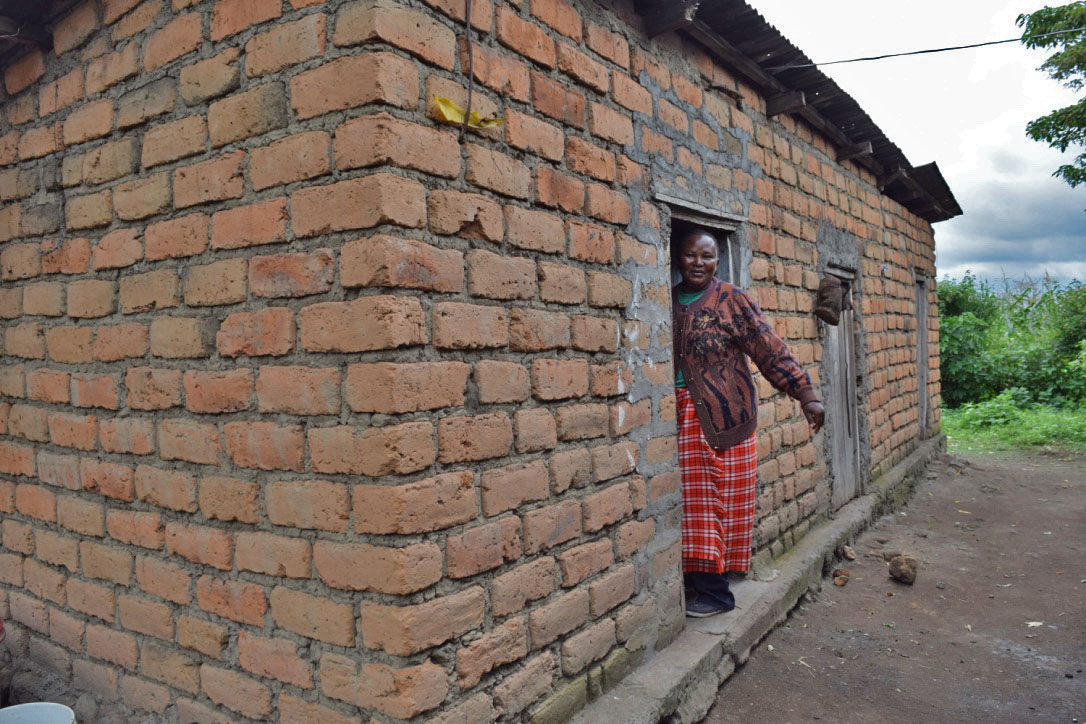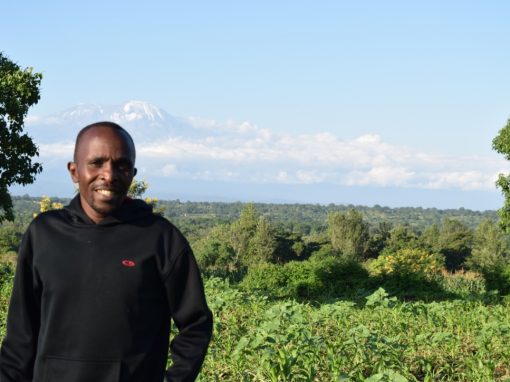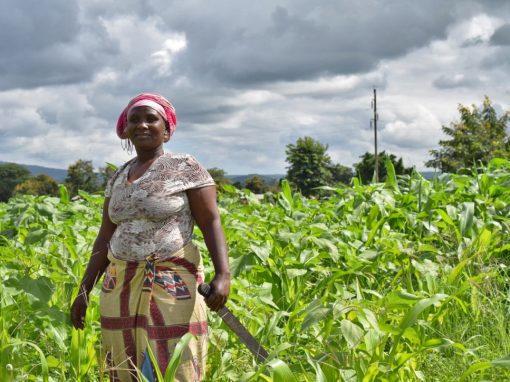Joanne Koola: Scaling up
Joanne Koola started growing improved bean varieties five years ago. She has scaled up — literally and figuratively — three times improving her house, and raising herself out of poverty and food insecurity. She is the perfect example of the difference a few beans can make in the life of a subsistence farmer.
Joanne Koola lives in a gray cement house, the nicest in her rural Tanzanian village. She paid for it with beans.
Exactly halfway between Cairo and Cape Town, Arusha is a city in northern Tanzania with a population of around 400,000 people. It is the closest big city for Koola, who lives two hours away, at the end of a long, dirt road, in the middle of her field, surrounded by beans and goats.
She didn’t always live in a cement house. She used to live in a shoddily-constructed circular hut, made of hand-gathered sticks for structure, mud for walls, and topped with thin, jagged sheets of metal.
Then, in 2012, an outreach worker from the Pan-African Bean Research Alliance (PABRA) approached her, and offered to sell her better-quality products and teach her improved farming practices. PABRA does research on beans in an effort to improve varieties, make them more resistant to climate change, and healthier for human consumption. The goal is to sell a better product to farmers, so that they can make more money, and raise themselves out of poverty.
At first, Koola was hesitant. Her husband had recently died, leaving her with no children and no income, just a hectare of land to farm. Swayed by PABRA’s promises of finance and food security, she agreed to devote half her land to testing its products — bean varieties, fertilizers, and agronomic practices. Within six months, her yield more than doubled and she could afford to upgrade her house.
In 2013, Koola moved into a rectangular structure made with planks of wood, and for the first time in her life, she had a house with a door.
Koola is the perfect example of the difference a few beans can make in the life of a subsistence farmer.
The farming industry in Tanzania employs approximately 80 per cent of the country’s workforce, and about 90 per cent of farmers are smallholder subsistence farmers. Agriculture exports make up more than a quarter of Tanzania’s GDP, but many farm owners cannot afford to feed their families because they’re at the mercy of climate and market volatility.
PABRA, which is partially funded by the Canadian government, is one of the dozens of organizations and projects in Tanzania which seek to alleviate poverty and food insecurity with bean research and development.
Although its ranking varies slightly from year to year, Tanzania has consistently been among the top five recipient countries of Canadian foreign aid since it became a “country of focus” in 2009. And Canada has contributed more than $1-billion to Tanzania since its independence in 1961. Canada has been helping to fund PABRA for more than a decade, but the most recent project expired in January 2015, and PABRA is hoping to renew.
Koola said she was the first person in her village to work with the organization, and in the five years since she’s been doing so, has made sure to follow its instructions exactly for best results. She’s dug a small trench along the outskirts of her field to retain water in the event of insufficient rainfall. She’s been meticulous with her planting and fertilizing schedule. She’s been sure to always keep beans for her own consumption before selling them at the market.
In 2014, again she upgraded her house. Her wooden house became the shelter for her goats, and she moved into a three-room structure made out of clay bricks with a concrete floor. For the first time, she had something other than dirt under her feet.
Koola shared the wealth.
With her farm earnings, she purchased more land, and began a farming co-op for orphaned children in her village. Now, the 30 or so children maintain small plots of Koola’s land, and on them, she teaches them how to farm effectively. She donates the seeds, fertilizer, and the expertise she learned from PABRA, and the children, who range in age from 7–14, learn a skill and keep the profit.
The majority of subsistence farmers in Tanzania grow mostly maize with a small amount of beans, because the beans remain a staple food and can make them more money. PABRA and other organizations are trying to make bean farming easier because beans are healthier than maize and improve household incomes.
Koola grows PABRA’s Jesca variety, which matures early for maximum yield, and is fortified with zinc and iron for better health. She said she knows maize is not enough, and she needs beans to feel “full and comfortable.”
She added that she’s felt a very real change in climate in the last 20 years; the rain comes less frequently, and doesn’t stay as long, she said. For that reason, the climate resilience of PABRA beans has allowed her to rely on at least a small yield on which she can sustain herself.
Despite the half-decade that Koola has been seeing the results of better technologies, her neighbours remain hesitant to invest in the changes. For the typical farmer who owns one–three acres of land, the cost of switching over to a new bean variety, plus paying for the inputs like fertilizer and manure, as well as the adjustment to new agronomic practices, is too high.
Koola, who said she has plenty of beans for her own consumption, is sick of her neighbours “begging around” for food and money when the technology and education are available to them. She said others in her village have tried to branch out from agriculture to other sources of income, but they cannot support themselves, and consequently neglect their farms.
In the summer of 2016, Koola upgraded her house once more. The clay brick house now contains only her kitchen, and she’s moved into the cement house — the one that’s the nicest in her village. She can afford the luxury of aesthetic choices. She’s painted her walls. For the first time, she has glass windows that open and close.
Click above to read the next part of the story, or click below to navigate through different chapters.
